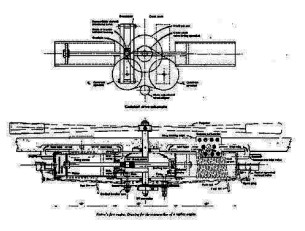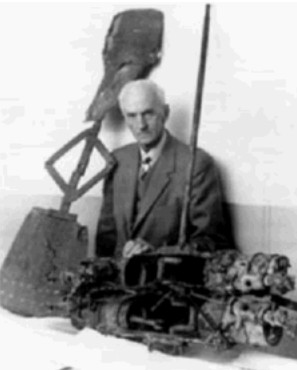Updated: 18-Mar-2021
From Appendix 9: This is about an aviation pioneer who was already experimenting with a bicycle with a vertical shaft and gears to try to lift himself in 1902.
-He then made a tricycle vehicle with bamboo wings and a self-built motor.
-It is said that he made a first flight in 1903 (March), nine months before the flight of the Wright brothers. Controversy aside, we are interested in the engine.
-The engine had horizontally-opposed cylinders with double-sided pistons and it has been calculated that it gave 15 HP (11kW).
-At that time it was called “oil engine”, to differentiate it from the more generic industrial “gas engine”.

“Pearse engine schematics”
From Appendix 12: Richard Pearse was an aviation pioneer in New Zealand. He was actually the first to fly in that country. He built the plane and with experienced mechanic Cecil Wood, he made a 15 CV horizontally-opposed cylinder engine.
-He found original solutions for the engine parts, made with more or less fortune materials. He even made the spark plugs.

"George Bolt with remainder of Pearse's engine"
-It seems that on the table, either there are two engines or it is one engine with four horizontally-opposed cylinders.
- Actually the correct thing would be to attribute the engine to Woods. But as always, many are involved in the manufacture of engines and fame is contributed to the name of the promoter.
-In the photo George Bolt, a Pearse historian. We also see the remainder of the engine and the propeller.
Engines of PEARSE
Model: Opposed cylinder engine
Arquitecture: Horizontally opposed
Cooling:
Total Displacement:
Bore / Stroke:
Power: 15 HP
Weight:


